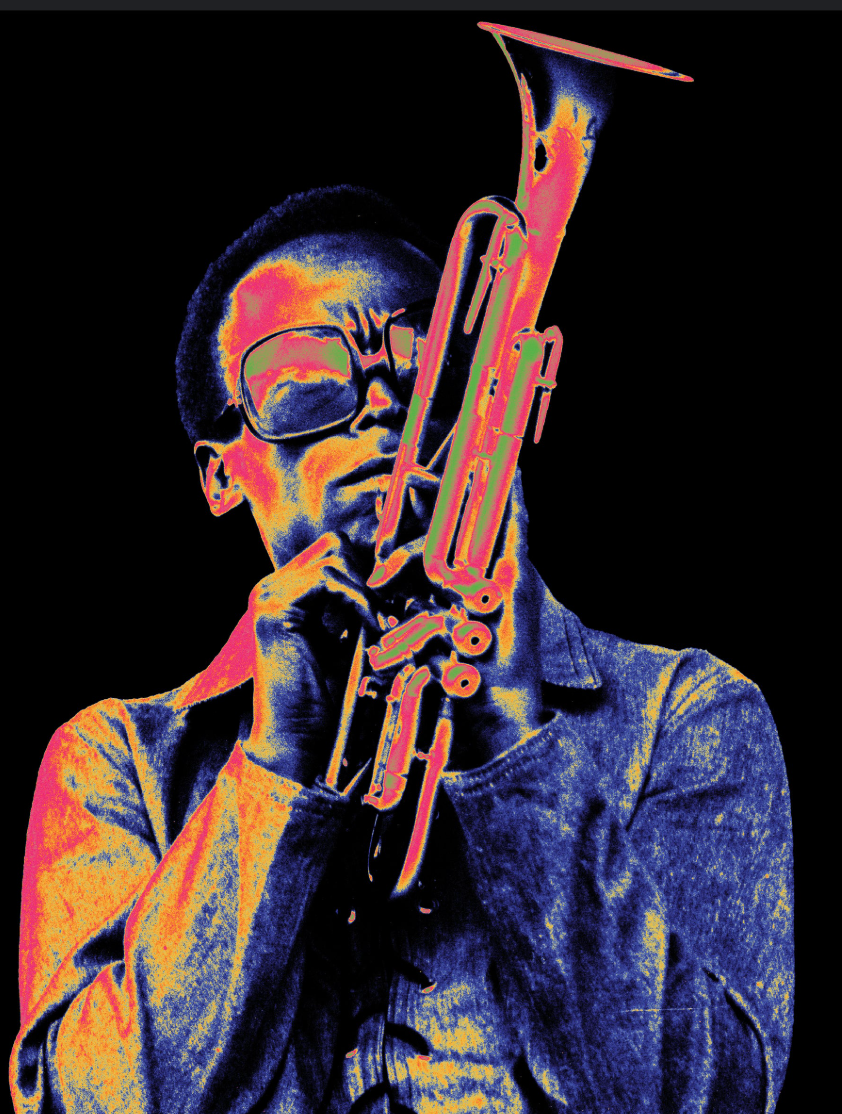"Miles Davis: The Genius Who Revolutionized Jazz Forever
- The Gooch
- Jan 6
- 3 min read
Updated: 20 hours ago
Miles Davis (1926–1991) was an American jazz trumpeter, bandleader, and composer, widely regarded as one of the most influential musicians of the 20th century. His innovative approach and willingness to explore new musical directions played a pivotal role in the evolution of jazz.

Early Life and Education
Born on May 26, 1926, in Alton, Illinois, Miles Dewey Davis III was raised in East St. Louis in an affluent African American family. His father was a successful dental surgeon, which afforded Davis a comfortable upbringing. He began playing the trumpet at age 13, receiving lessons from local musician Elwood Buchanan, who emphasized a clear, vibrato-free tone.

In 1944, Davis moved to New York City to attend the Juilliard School of Music. However, he soon became more engrossed in the vibrant jazz scene of Harlem, performing with artists like Charlie Parker and Dizzy Gillespie. This period marked his introduction to bebop, a complex and fast-paced style of jazz.


So What!
1940s–1950s: Bebop and Cool Jazz
Davis's early career was marked by his collaboration with Charlie Parker, contributing to the development of bebop. In 1949 and 1950, he recorded the "Birth of the Cool" sessions, which were instrumental in the development of cool jazz, characterized by relaxed tempos and lighter tones.

Late 1950s–1960s: Hard Bop and Modal Jazz
In the mid-1950s, Davis formed his first great quintet, featuring John Coltrane, Red Garland, Paul Chambers, and Philly Joe Jones. This group produced several influential albums, including " 'Round About Midnight." In 1959, he released "Kind of Blue," a landmark album that introduced modal jazz and became one of the best-selling jazz records of all time.

Late 1960s–1970s: Jazz Fusion
Always an innovator, Davis embraced electric instruments and rock rhythms in the late 1960s, leading to the creation of jazz fusion. Albums like "In a Silent Way" (1969) and "Bitches Brew" (1970) exemplify this era, blending jazz improvisation with electric instrumentation and rock influences.

1980s: Later Career and Retirement
After a hiatus in the late 1970s due to health issues, Davis returned to music in the 1980s, exploring genres like funk and pop. He continued to perform and record until his death on September 28, 1991, in Santa Monica, California.


Milestones
Miles Davis's career spanned five decades, during which he continually pushed the boundaries of jazz. His willingness to embrace new styles and mentor young talent ensured that jazz remained a dynamic and evolving art form. Davis's influence is evident in numerous genres, and his recordings continue to inspire musicians and listeners worldwide.


Miles Davis was a pivotal figure in the evolution of jazz, continually pushing the genre's boundaries and influencing countless musicians across various styles. His impact is evident in several key areas:


Innovations in Jazz Styles
Cool Jazz: In the late 1940s and early 1950s, Davis was instrumental in developing cool jazz, a style characterized by relaxed tempos and lighter tones. His work on the "Birth of the Cool" sessions exemplifies this contribution.


Modal Jazz: Davis's 1959 album "Kind of Blue" introduced modal jazz, focusing on scales or modes rather than traditional chord progressions. This approach allowed for greater improvisational freedom and has become a cornerstone in jazz education and performance.



Jazz Fusion: In the late 1960s and early 1970s, Davis embraced electric instruments and incorporated rock and funk elements into his music, leading to the birth of jazz fusion. Albums like "Bitches Brew" showcase his willingness to experiment and explore new sonic territories.


Influence on Musicians
Davis's collaborations and mentorship have profoundly impacted numerous artists:
Herbie Hancock: As a member of Davis's second great quintet, Hancock was influenced by Davis's innovative approaches, which encouraged him to explore new musical directions. Hancock recalls a pivotal lesson from Davis, teaching him that there are no wrong notes in jazz—only creative opportunities.



Wayne Shorter: Joining Davis's quintet in the mid-1960s, Shorter contributed significantly to the group's sound and later became a leading figure in jazz fusion.



Cultural Impact
Beyond his musical innovations, Davis played a crucial role in elevating jazz as an art form and breaking racial barriers in the music industry. His style and attitude influenced not only music but also fashion and cultural attitudes, embodying the spirit of cool and sophistication.







In summary, Miles Davis's relentless pursuit of innovation and excellence reshaped jazz multiple times, leaving an indelible mark on the genre and inspiring generations of musicians to explore and expand the possibilities of music.





Comments